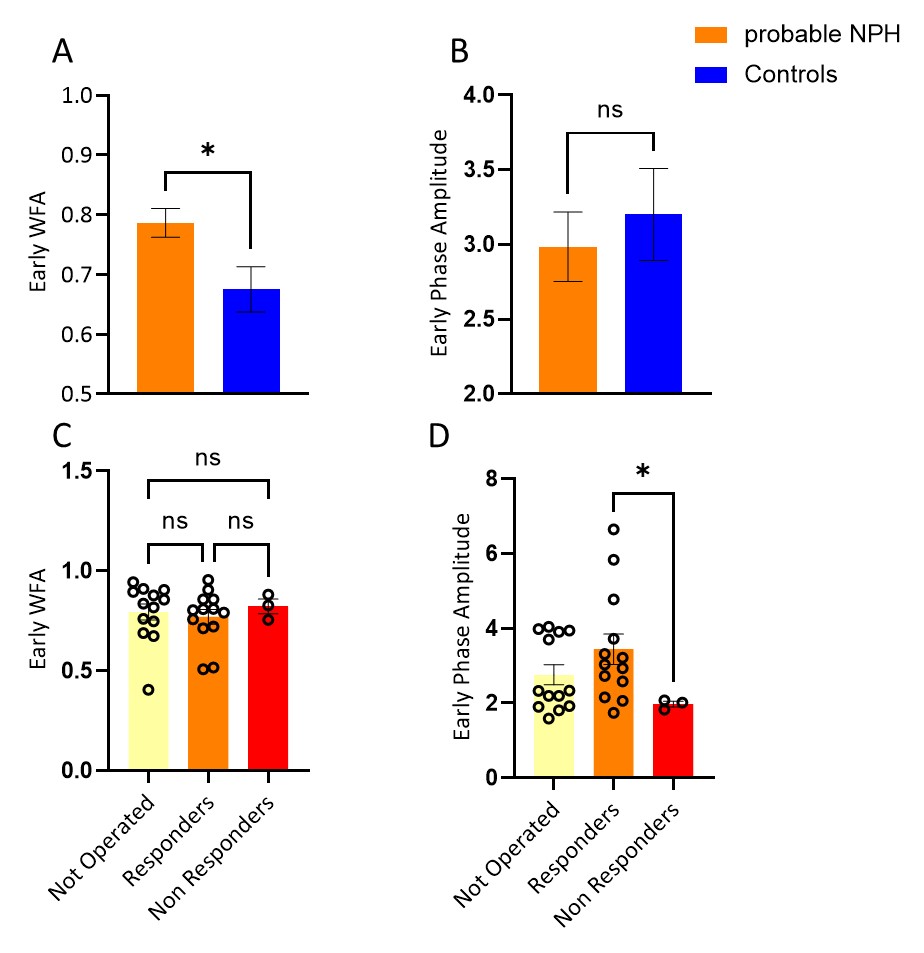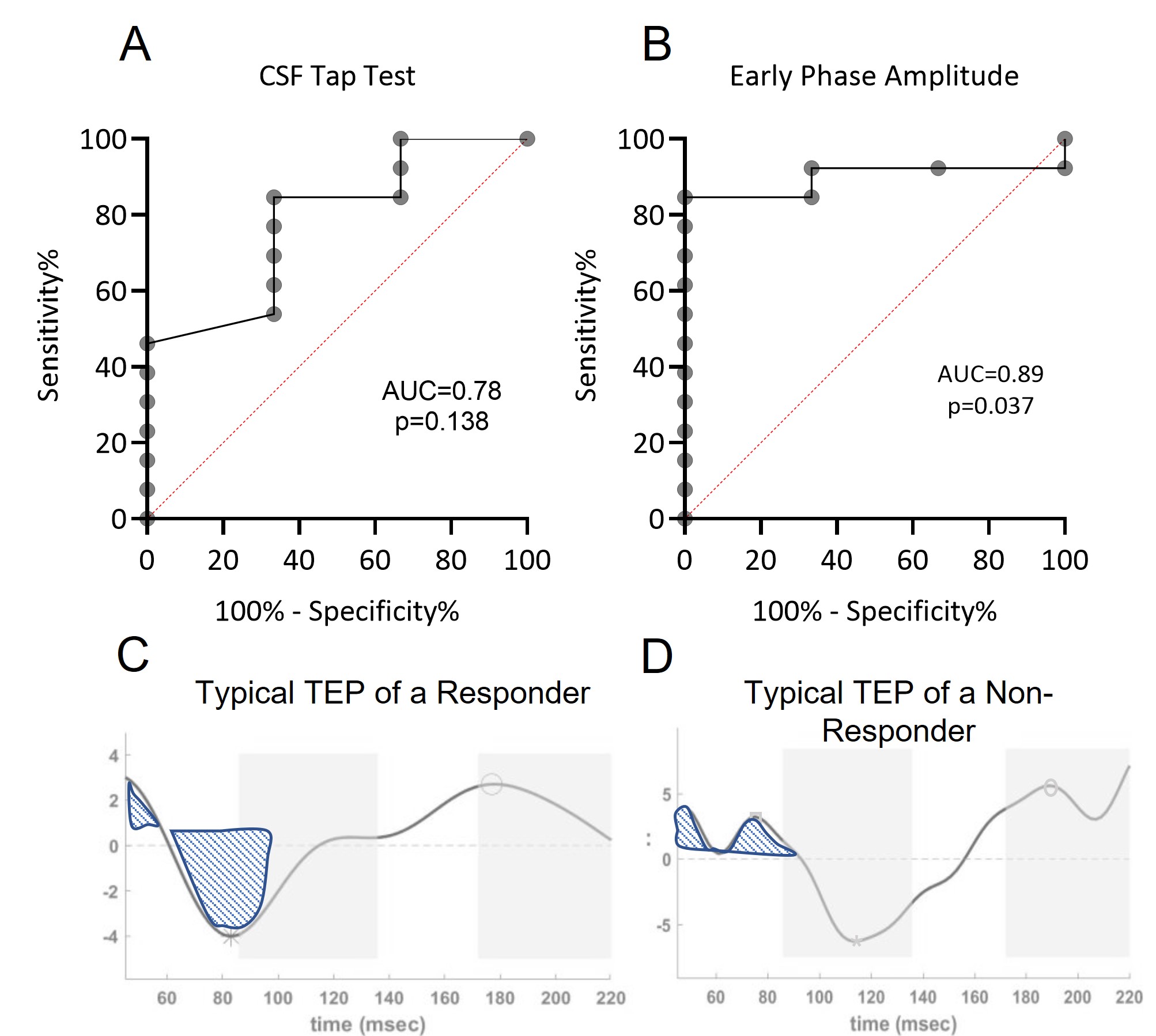Category: Other
Objective: Assess the utility of an EEG-TMS-based evaluation for prediction of response to ventriculoperitoneal shunt (VPS) in normal pressure hydrocephalus (NPH).
Background: VPS is the standard of care for patients with NPH. As not all patients benefit from the operation, prediction of response in advance can result in improved patient selection. The most commonly used clinical test for diagnosis of NPH, is a CSF tap test (CSF-TT), assessing improvement in measures of gait following removal of 30-50 ml of CSF; however this is an invasive test that causes patient discomfort and possible risks, and only vague definitions for results and a high negative predictive value . There is an ongoing need for a more convenient and objective procedure that enhances prediction of response to VPS.
Method: Probable NPH (n=29) and age-matched healthy controls (HC), had a neurological and cognitive exam, brain imaging and for the NPH patients a CSF-TT using a 10-meter Timed Up and Go test (TUG). A single TMS-EEG was performed (for NPH patients at baseline), inducing focused magnetic fields over the primary motor cortex, while simultaneously measuring the brain TMS-evoked potentials (TEP). The brain network response was analyzed by a proprietary algorithm. Subjects that underwent VPS were evaluated for clinical response 1-3 months following the operation.
Results: Early Waveform Adherence (WFA) was significantly different between probable NPH patients and HC (p=0.013, while Early Phase Amplitude (EPA) was not [Figure 1A,B]. Among the responders displayed a significantly higher EPA at baseline (p=0.039) compared to non-responders [Figure 1C,D]. A ROC curve analysis yielded AUC=0.89, p=0.037 with sensitivity of 84.6% and specificity of 100% for TMS-EEG, while CSF-TT produced a AUC=0.78, p=0.138 with sensitivity of 76% and specificity of 66% [Figure 2A,B]. A typical TEP of a responder vs. non responder and EPA calculation [Figure 2C,D].
Conclusion: The TMS-EEG and proprietary algorithm presented were shown to be a potential diagnostic platform for prediction of response to VPS in patients with probable NPH. The EPA measure identified, proved to have a superior predictive value compared to CSF-TT. We present a non-invasive objective diagnostic test for definite NPH, that may potentially replace CSF-TT, providing improved patient management.
To cite this abstract in AMA style:
T. Davidy, S. Anis, A. Sominski, J. Zauberman, T. Fay-Karmon, O. Lesman-Segev, S. Hassin-Baer. Measures of trancranial magnetic evoked potentials for prediction of response to ventriculoparitoneal shunt In normal pressure hydrocephalus [abstract]. Mov Disord. 2023; 38 (suppl 1). https://www.mdsabstracts.org/abstract/measures-of-trancranial-magnetic-evoked-potentials-for-prediction-of-response-to-ventriculoparitoneal-shunt-in-normal-pressure-hydrocephalus/. Accessed December 30, 2025.« Back to 2023 International Congress
MDS Abstracts - https://www.mdsabstracts.org/abstract/measures-of-trancranial-magnetic-evoked-potentials-for-prediction-of-response-to-ventriculoparitoneal-shunt-in-normal-pressure-hydrocephalus/


